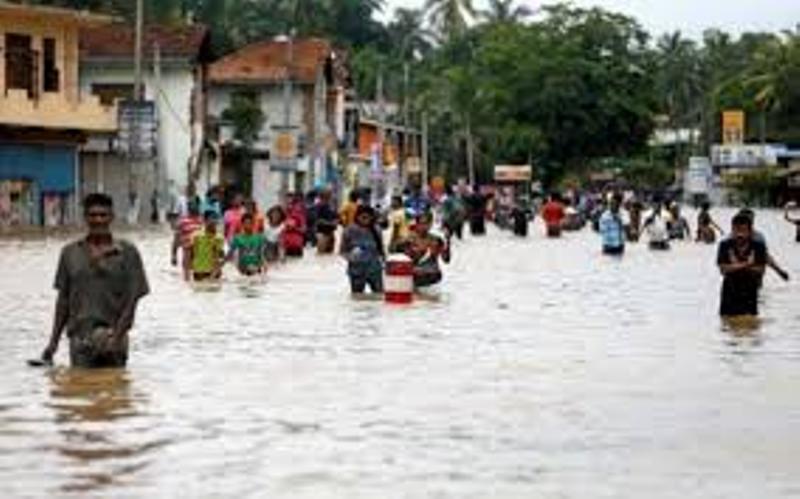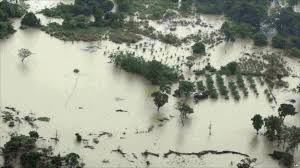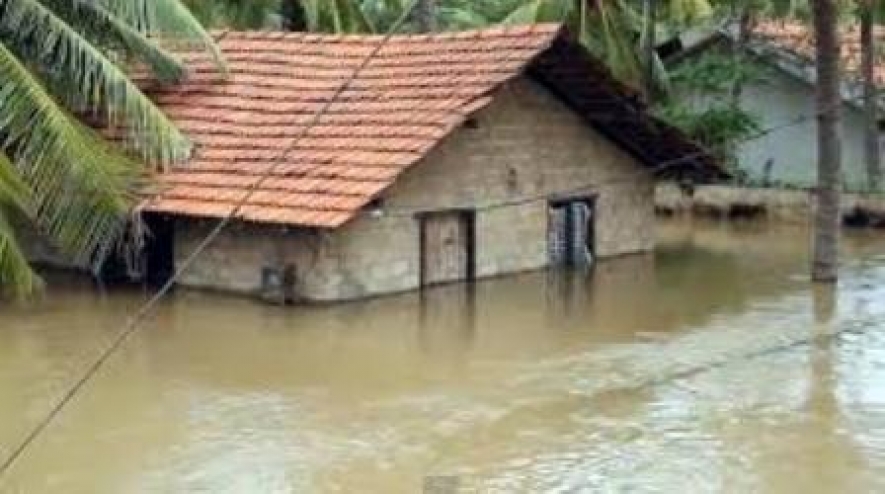Sri Lanka, despite the fact that it was previously perceived as country not prone to natural disasters, in the recent history has faced many a natural disasters such as cyclone, floods, tsunamis and landslides. During all these disasters the government moved in to action through respective Government Agents supported by Grama Sevaka, tri-forces, Police, social services organizations and the philanthropists to provide immediate relief to the affected people.

The immediate relief activities, in the past by the state mainly contained the provision of cooked meal and the grant of Rs 10,000.00 to next of kin of those who lost their lives. The cost incurred for cooked meal by the government so far was Rs 150 per day. Further, the compensation paid to hoses and properties destroyed/damaged were trivial. The maximum compensation paid in the event of a complete destruction of a house was Rs 100,000/ and the partially damaged properties were paid only Rs 40,000/=
The bureaucratic red tapes preclude issuing of provisions to those who are not in the displaced centers for the purpose despite instruction given to ignore circulars and the Regulations. It appears that still the dry ration are being provided by the government only to those who are in the displaced centers.
According to Disaster Management Centre as of May 25, little over 221,000 people are housed at 265 welfare centers and until they return to their houses they would be looked after by the state.
The generous assistance by the civil society and the religious organizations go beyond the reach of the governments in extending the helping hand to the victims.
But the new government of good governance realizing all the weaknesses in the system with the aim of facing to the reality in times of crises has made a proactive action plan to rescue the people from their destiny. It’s happy to note that new proactive plan has already paid dividends to the people affected by the recent natural disaster.
The Minister of Finance Ravi Karunanayaka said the government took the initiatives to obtain an insurance coverage for the entire island to take care of the people and their properties and the small uninsured business places. The value of this National Natural Disaster and Emergency Relief Insurance , the first of its kind in the country. This scheme provides an aggregate cover of Rs 10 Billion for a year with National Insurance Trust Fund (NITF), a regulatory body under the Finance Ministry itself. The NITF has the backing of international reinsurers.
Thanks to this insurance policy, over 400,000 people who were affected by the recent disaster are to be benefitted immensely which was not seen in the past. President Maithripala Siresena initiating a Presidential Task Force on the subject directed the General Treasury to release required fund for relief measure without any restrictions.
Accordingly, the cost of cooked meal given to displaced person immediately after the incident by the respective Divisional Secretaries was increased from Rs 125- Rs 250 per day. The compensation on the demise of a person has now been increased from mere Rs 15,000/ to one hundred thousand. The property damages are being estimated but the government is already on record saying that a fully damaged house will be paid an amount between Rs 100,000/ and Rs 2.5 million. In the past the maximum that could be paid was Rs 100,000 for a fully damaged house.
There is a new phenomenon now in the country is the involvement of the media institutions that distributed goods donated by the public. People handed over these items to the media institutions, because they did not know where else to take them. In many relief centers, these media institutions refused to hand the items to the government authorities because they needed the publicity. Their banners only showed their own logos. No mention about the public that donated the goods. But the media were more serious in getting the voice cut to the effect that it was their media first reached the village on every occasion. Though the role played by the media in times of crisis cannot be criticized or under estimated there exists an important query whether the media have done their social responsibility as a responsible media. Because of this lacuna the people both the affected and the donors could not get a real assessment of the situation. Even the government message did not get across properly. That is why the Divisional Secretaries had to appeal to the people not to bring food items as it was over supplied.
While the large business entities which have the insurance cover for their establishment can make the claim from their respective insurers the village level small shops are otherwise left in the lurch during crisis of this nature. The government has well thought of the plight of these people and got them included under this mass insurance cover to pay compensation ti these uninsured boutiques and eateries.
In spite of the fact that the government has embarked on a crisis management plan with an insurance policy for Rs 10 billion in a proactive manner the lopsided ideas emerging from various corners suggest that there is no such a plan in place which is not true.
A Divisional Secretary (DS) who wants to be anonymous said that however much the political authorities proclaim that the circulars and regulations should not be considered when it comes to relief, it was not possible without a circular to that effect. “even now only those who are in the displaced camps only provided with relief by the DSS” he quipped.
 But on the other hand , he said that the new measures introduced by the Finance ministry with the back to back insurance cover is a huge opportunity for the poor peasants living in the DS divisions in the affected area. This is an unprecedented move with an enhanced facilities and compensation not only for the houses but also the smaller businesses as well.
But on the other hand , he said that the new measures introduced by the Finance ministry with the back to back insurance cover is a huge opportunity for the poor peasants living in the DS divisions in the affected area. This is an unprecedented move with an enhanced facilities and compensation not only for the houses but also the smaller businesses as well.
Apart from the loss and damages to persons and properties there is a need to look into Reconstruction, Rehabilitation, Education, Child Protection and Welfare, and Recovery of Livelihoods and to care of other infra-structure facilities roads and the schools. The government needs to incur a lot of its wealth on this. That is why a general call for assistance was made to friendly countries.
It is with this idea the GOSL reached out to the world seeking assistance to help over 425,000 people affected by the flood and landslides. Disaster Management Ministry in a public appeal released information of a special Bank Account open for both local and foreign donations. The Government also announced that it had decided to waive the import duty slapped on all goods that are being sent to Sri Lanka as flood relief.
Sri Lanka appealed for foreign aid to recover from massive floods that caused an estimated $2 billion worth of damage and claimed more than 100 lives. Finance Minister Ravi Karunanayake said 35,000 homes were damaged in the floods triggered by the heaviest rain with the capital Colombo the hardest hit. Mr Karunanayaka expected foreign countries would foot about 75 percent of total reconstruction costs.
But though there is a humanitarian aspect to look into under this natural devastation the rampant construction in low-lying parts of Colombo that had been designated as storm water collection points and the filling of marshlands haphazardly could identify itr as a mad made disaster rather than a natural disaster.
-M. Ali Hassen-
(Department of Government Information)




















